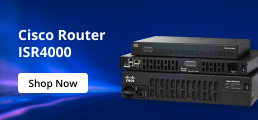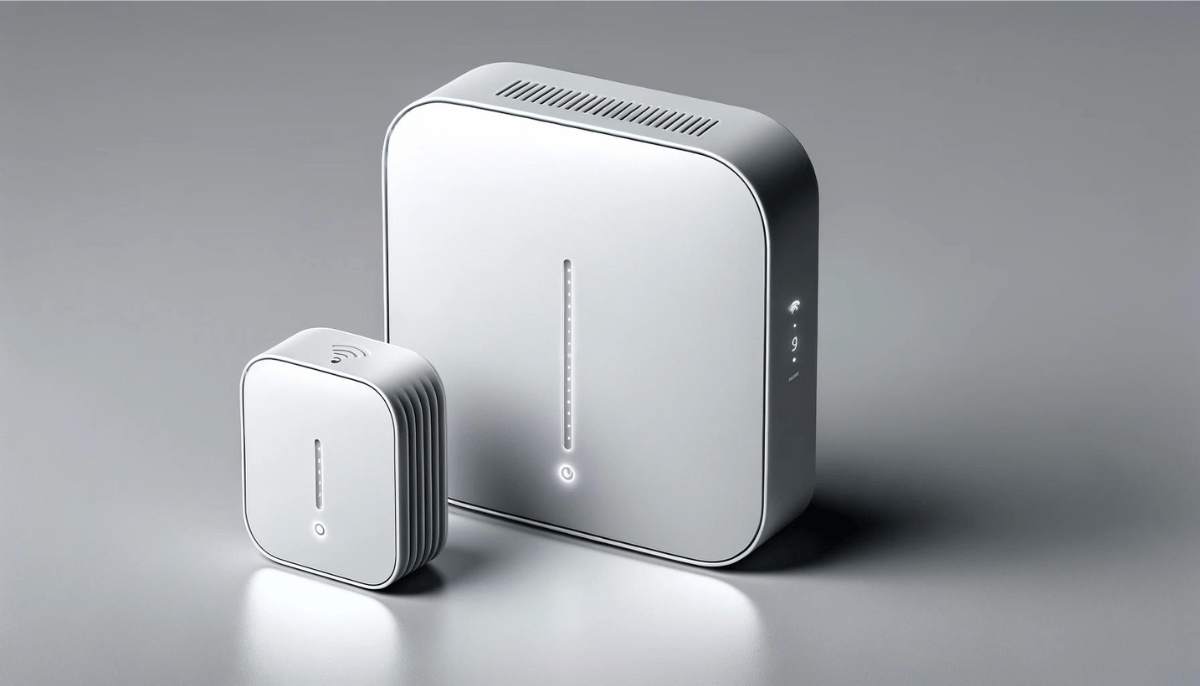Table of content
Introduction:
Do you want a speedy internet connection all over your workplace and home without facing connectivity and access problems? Do you want a productive improvement in your WiFi signals? If yes, then you should consider a WiFi access point, also known as APs, in your system. A WiFi access point has the ability to create this magic where you receive WiFi signals without obstacles and facilitate the dead spots of your office with a never-ending supply of WiFi signals. But, what is a WiFi access point? How does it work? And what are the wise applications of access points? Worry not, we have answers to your questions. This blog sheds light on each and every aspect of a WiFi access point to let you know about how you can improve your internet strength. So, let’s start exploring all the dimensions of an access point.
What Is A WiFi Access Point?

A wireless access point is a networking device that creates a Wireless Local Area Network enabling other WiFi devices to join the network at the same time. Fundamentally, access points (APs) are wirelessly connected to a router or network switch from where they receive the WiFi signals and then a WiFi access point transmits its own signals among different devices.
Putting it to the simplest, think of a WiFi access point as a device that creates a wireless network and allows other devices to access it. All it happens after you connect a WiFi access point to a network switch that provides APs with WiFi signals.
In sum, WiFi access points act as a bridge among different WiFi devices enabling them to connect on the same network. This is how an access point improves the stability and connectivity of your WiFi signals.
How Does A WiFi Access Point Work?

When it comes to discussing the working of a WiFi access point, it must be mentioned that it works on the principle of Data Conversion and Signal Broadcasting. Firstly, it converts data packets into WiFi signals and then it broadcasts these signals among devices creating a hotspot and vice versa.
By connecting to a wired switch or router via an Ethernet cable, an access point integrates with the existing wired network infrastructure. It broadcasts a Wi-Fi signal, enabling nearby Wi-Fi-enabled devices to wirelessly connect to the network. One or more SSIDs, which serve as unique identifiers for different wireless networks, are broadcast by the AP. To connect to specific wireless networks, users can select the desired SSID.
In environments with large corporate networks that typically have multiple APs, roaming support is provided, allowing devices to switch seamlessly between access points as they physically move within the coverage area, without losing connectivity.
Encryption protocols such as WPA2 (Wi-Fi Protected Access 2) or WPA3 are typically supported by APs. Advanced APs also incorporate security features, including authentication methods like WPA-Enterprise, utilizing a RADIUS (Remote Authentication Dial-In User Service) server.
Why To Use A WiFi Access Points:
Why should I use a WiFi access point when already have a network switch and router? The answer is simple: It is a misperception that access points aim only to transmit WiFi signals because the story goes beyond just a WiFi connection. Maybe the best part of a WiFi access point is to extend the range of WiFi signals by throwing them to the dead spots at your workplace or home.
Not only this but there are many other aspects of access points that set it apart from network switches and routers. To make the story short, we have assembled features, technicalities, and use cases of access points, network switches, and routers.
WiFi Access Points vs Switch vs Router:
| Feature | Network Switch | Router | WiFi Access Point |
| Primary Function | Connects devices on a local area network (LAN) | Connects multiple networks and routes data | Connects wireless devices to a wired network |
| Layer of Operation | Data link layer (Layer 2) and some can operate at Network layer (Layer 3) | Network layer (Layer 3) | Data link layer (Layer 2) |
| Data Handling | Switches data packets between devices on the same network | Routes data packets between different networks | Transmits and receives wireless data packets |
| Speed | Varies (typically 1 Gbps to 100 Gbps) | Varies widely, depending on model (from 100 Mbps to over 1 Gbps) | Varies (up to 2.4 Gbps with Wi-Fi 6) |
| Ports | Multiple Ethernet ports (from 4 to 48 or more) | Usually has fewer Ethernet ports (typically 2-8) | Typically one Ethernet port to connect to LAN |
| Security | Basic security (VLANs, MAC filtering) | Advanced security (NAT, firewall, VPN, etc.) | Encryption standards (WEP, WPA, WPA2, WPA3) |
| Configuration | Can be unmanaged (plug-and-play) or managed with advanced settings | Requires configuration for network management | Requires configuration for SSID, security settings, etc. |
| Coverage | Wired connections only | Can provide both wired and wireless connectivity | Wireless coverage typically limited to a specific area |
| Use Case | Ideal for creating networks within a building or campus | Essential for connecting to the internet and inter-networking | Useful for providing wireless access within a specific area |
Should I Use A WiFi Access Point?
There are some scenarios that make an access point a must-go choice for you. Remember, APs are not purpose-built, but still, there are situations where you can make the best out of them.
Since WAPs are versatile and can be used in a variety of network environments from households to small offices, and from large buildings to complex network infrastructures, their best use is linked with your needs and circumstances around you.
Common Types Of Access Points:
Standalone WAP (Access Point)
Essentially, a standalone access point acts like a switch or hub within a wireless network, operating at the data link layer of the OSI model. It processes frames from connected devices and routes them based on physical addresses. Unlike wired networks that adhere to Ethernet standards, wireless networks follow the IEEE 802.11 or Wi-Fi standards. Interestingly, standalone APs bridge this gap by supporting both standards, capable of converting Wi-Fi formatted frames to Ethernet formats and vice versa. You’ll typically find standalone APs in extensive network environments such as offices, educational institutions, and public spaces.
Multifunction WAP (Access Point)
A step up, the multifunction access point merges the capabilities of various network devices into a single unit, offering not just wireless connectivity but also routing, switching, firewall protection, and centralized management features. These APs shine in settings where ease of use, space savings, and simplicity are key. A prime example is the wireless router provided by ISPs for home use, which combines the functionalities of an access point, an Ethernet switch, and a router into one compact device.
Controlled WAP (Access Point)
Also known as a Lightweight Access Point (LWAP), this type operates under the guidance of a Wireless LAN Controller (WLC). LWAPs delegate nearly all decision-making and configuration tasks to the WLC. They merely forward incoming frames to the WLC, which then determines the optimal routing path and instructs the appropriate LWAP to deliver the frame to the intended recipient. This setup is ideal for environments requiring streamlined and centralized control over network traffic.
Advantages of Access Points:
Features aside, there are some benefits that make you set up a WiFi access point in certain circumstances. Have a look at the following bullet points:
- Enable connectivity for various WiFi devices such as smartphones, tablets, and IoT sensors.
- Ideal for multi-building complexes due to their effective range.
- Scalable to support many simultaneous users without degrading performance.
- Alleviate network congestion during peak usage.
- Maintain uninterrupted connection during user movement between access points.
- Some models feature PoE+ technology for power and data over one cable.
- Capable of gathering and utilizing contextual data for automation and other benefits.
- Enhance security with features like captive portals and access control lists.
Conclusion:
WiFi access points bring not only advanced features specific to them but also offer plenty of benefits when deployed in a relatable network system. Whether you want smooth internet access in the dead zones or a shift towards high-speed connectivity, APs are the best way to make it happen. Additionally, you can deploy WiFi access points in almost every network situation after exploring their types and uses. In the end, we hope to have provided you with an insightful guide on WiFi access points. Thus, we encourage you to visit us again when need help regarding networking.
Frequently Asked Questions:
Which is the best between WiFi and access point?
Depending on circumstances, wireless routers are more suitable for domestic use or small offices where as access points can be used in medium size businesses, homes, and large enterprises.
Does the WiFi access point increase the internet speed?
Yes, a WiFi access point increases the speed of the internet signal after receiving it from a network switch. It stabilizes, increases, and extends the WiFi signals.
What is the range of a WiFi access point?
A WiFi access point throws signals to the dead zones in your home and office providing a typical range of between 1600 and 2200 square feet.
How does a WAP work?
A WAP receives data packets from a network switch and converts them into WiFi signals. After that, it broadcasts these signals to all the WiFi devices.




 Catalog
Catalog













































































































